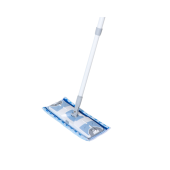In procurement, sourcing means finding, rating, and hiring suppliers based on set criteria in order to save money and get the best goods and services at the best price and terms. Tendering is used at tactical and strategic levels to identify the best suppliers at the lowest cost to obtain a competitive edge.
The supply chain process begins with product or service procurement in most firms. Sourcing requires balancing product and raw material quality and cost. Most procurement teams want to save costs and boost profits.
How do you guarantee you have the necessary tactics and approaches to make sourcing profitable?
In this 101 course, we cover everything from identifying items to choosing the best suppliers to acquire them to delivery methods from supplier to client. Let’s begin.
What is Sourcing?
Sourcing involves selecting the best supplier that offers high-quality goods and services at a price that enables the business owner the profit margins they require. Sourcing and procurement management go together. Before buying items, you must:
- Source potential suppliers
- Implement strict vetting
Because backtracking is expensive, this prevents sourcing errors. Most company executives focus on strategic sourcing’s cost reduction benefits, but in today’s competitive market, successful organizations are producing value while reducing cost and waste.
The sourcing process involves three main factors:
- Cost structure
- Profit margins
- Competitiveness
All three issues influence enterprises of all sizes.
Sourcement involves:
- Data collection on high-quality suppliers
- Contract negotiations
- A market research
- Quality testing of products
- Thinking of outsourcing goods
- Establishing corporate standards.
Remember that sourcing is for procurement. Procurement steps:
- Logistics
- Communications
- Negotiations
- Variety of Sourcing
Different types of Sourcing
To implement successful sourcing, you must understand your complete company plan, including what resources are needed to accomplish it and the market pressures and dangers of specific approaches.
Cheap products and services should not be the main purpose. Procurement teams should prioritize mutually beneficial partnerships while sourcing. You can source directly from wholesalers, manufacturers, or distributors, depending on your needs and the items you want.
What forms of sources should you consider?
1. Outsourcing
Using a third party to conduct in-house services or generate items is the most basic example. Migrating operations abroad or working with a domestic provider might also help. Back and front office operations can be outsourced.
2. Insourcing
This method involves assigning a task to a firm employee. This cost-effective technique provides on-the-ground quality monitoring of goods and services, thus most corporate executives choose it.
3. Near-sourcing
Some of your operations should be near where your items are marketed.
4. Country-sourcing at low cost
The LCCS uses materials from nations with cheaper labor and manufacture. This form reduces an organization’s operational costs. Most worldwide firms source this way from China.
5. Global Sources
World is now one gigantic market. Buying from foreign markets across geopolitical borders is straightforward. This approach exposes your company to new markets and gives you a global perspective on business.
You can also learn new talents and use resources not available in your nation.
6. Prime/Subcontracting
This structure comprises a contractor and subcontractor contracting to do part of a project. Because all contracts are between offshore corporations, offshore law applies. Procurement teams can ease import/export limitations.
7. Captive Services
Some companies create and operate a foreign subsidiary. This solution gives you more control over confidentiality and security. Your economies of scale will suffer.
8. Pro Service
Hire professionals in service jobs that require particular training.
9. Manufacturing
Making new goods from raw materials or components.
10. Vertical Integration
Merges firms at various manufacturing and/or distribution phases in the same industry. Thus, backward integration occurs when a business acquires its input provider and forward integration when it acquires distribution chain companies.
11. Few or many suppliers
Multi-supplier strategies and price-based purchasing are widespread for commodity items. However, single-source purchasing involves buying from one provider even while others offer identical items. Sole-source procurement involves one provider.
12. Joint ventures
Two or more parties form this business. Common features include shared ownership, returns and risks, and governance.
13. Virtual Business
Information technology connects independent firms (suppliers, consumers, rivals) to share talents, costs, and markets.
There are several methods. These partnerships are managed differently due to the alternatives.
Responsible sourcing
Today’s global supply chain market emphasizes responsible sourcing. In this sort of sourcing, firms voluntarily consider social and environmental factors while managing supplier relationships.
Modern consumers and investors care more about product ethics and sustainability. They are increasingly investing in socially sustainable products and services. Sourcing teams and company executives that want to stay competitive and maintain their brand must include social, environmental, and ethical policies into their business, assuming responsibility for product life cycles and preserving workers’ rights during manufacturing.
That’s easier said than done. Companies may not realize the dangers to their business and suppliers due to the complexity of global supply networks.
Thankfully, a remedy exists. Your organization must track a product or service through the supply chain and engage with their company and suppliers to guarantee fair working conditions and sustainable environmental practices.
What is Impact Sourcing?
Modern sourcing trends include impact sourcing. Business Process Outsourcing (BPO) and Information Technology Outsourcing firms use this socially responsible sourcing to hire people with few sustainable job prospects.
The impact sourcing industry employs impoverished and vulnerable people to scan papers, enter data, verify and sanitize data, tag videos, and microwork.
Sourcing-Models
A sourcing business model combines a company’s relationship model and formalizes supply source and economic control. This influences how you manage relationship economics. The 7 Sourcing Business Models:
1. Simple Provider Model:
Used to find the cheapest items and services.
2. OK Provider Model:
Used to take advantage of high-volume discounts with reliable suppliers.
3. Preferred Provider Method:
A lengthier contract generally provides value-added capabilities or volume discounts with a provider.
4. Performance/Managed Services Model:
The supplier must drive efficiency and meet service levels. This strategy allows for longer contracts because the provider benefits from maintaining quality.
5. Business Model: Vested
This collaborative strategy needs both parties to commit to one other’s success. These long-term connections enhance innovation and risk management.
6. Model of shared services
Is an investment-based concept adopted by firms looking to build internal suppliers.
7. Equity Partnerships:
Formal structures bind legally. This technique involves directly investing in another firm to increase capabilities.
Why Is Sourcing Important?
Getting the supply chain right starts with product and service sourcing. One must balance product quality and raw material demands. Affordable items are also important when sourcing since they affect the bottom line.
Well-executed procurement helps your organization to develop reliable and predictable supply chains, keeping stores filled and consumers satisfied. When done effectively, sourcing may boost brand image and loyalty.
By benefiting buyers and suppliers, strategic sourcing helps manage costs. Negotiating lower unit prices for bulk purchases lowers product costs. It helps the company price competitively. However, suppliers profit from a stable outlet for their goods, improving planning and cash flow.
Benefits Of Sourcing
1. Cost-Saving
Strategic sourcing’s first and most popular benefit is saving money by picking suppliers that deliver the most value at the best price. Your bottom line will benefit from this domino effect.
2. Honing suitable providers
Supplier quality underpins sourcing process success. Supplier profiles and fundamental competencies should be available to procurement teams. This lets you match your company’s goals with your best provider for maximum value at minimum expense.
3. Long-term supplier relationships
When recognized and considered in sourcing choices, suppliers will be encouraged to perform at their best to achieve your company’s goals.
Purchasing and Sourcing Diversity and Inclusion
Diversifying supplier chains can help your business. Diversity and inclusion boost revenue, competition, innovation, new markets, and social effect in local operating markets.
How can your firm increase supply chain diversity?
1. Where are your procurement money going?
Building a diverse and inclusive supply chain requires knowing external procurement expenditures.
2. Find varied providers for key expenditure categories.
After understanding the major spend categories, you may expand your supplier pool within each area. Explore platforms that link you to varied vendors. Advocacy and diversity certification groups are good starting points.
3. Adopt inclusive procurement practices.
Select at least one varied provider in competitive supplier selection/RFP procedures.
How Are Procurement and Sourcing Different?
Procurement, purchasing, and sourcing are often confused. The terms are similar but have different meanings.
Procurement and business leaders must grasp the distinctions to better comprehend the process. Set the differences now.
An organization’s essential items and services are usually procured. Procurement purchases high-quality commodities on schedule to suit corporate demands. Streamlining procure-to-pay-cycle helps you understand and control your company’s expenditure, reduce mistakes and fraud, and increase productivity.
Processes and steps in procurement include:
- Needs acknowledgement
- Requesting goods and services
- Check and approve
- Sourcing
- Purchase order
- Receiving goods or services
- Received invoice
- Pay bill
Alternatively, it involves locating the best supplier and negotiating the best contract conditions.
The sourcing process:
- Definition of need
- Market research
- Running sourcing events
- Checking suppliers
- Differences between sourcing and procurement
- Process Parts
Sourcing vs. Procurement Differences
Process Components
Pre-purchase sourcing is a procurement subprocess. Sourcing finds the lowest purchasing price and develops high-value supplier networks. To conclude, sourcing improves the procurement cycle by building supplier relationships that assure product quality and availability.
Simpler sourcing has fewer moving parts. Define internal needs, look for providers, organize sourcing events, and evaluate suppliers.
Procurement includes sourcing, purchasing, data analysis, contract and supplier relationship management.
Timing
Sourcing occurs before or during the procurement process, therefore their time is varied.However, procurement encompasses all operations before, during, and after purchase.
Goals and Focus
Procurement and sourcing have different objectives. Sourcing involves finding the best suppliers and constructing a reliable supply chain. However, procurement involves strategic and tactical elements.
Procurement involves buying high-quality goods and services at reasonable prices to meet internal needs. In summary, sourcing deals with suppliers while procurement buys products and services.
Function
Sourcing creates supply networks and systems for procurement experts.Sourcing teams build vendor connections, whereas procurement teams buy items.Thus, sourcing facilitates supply flow, whereas procurement optimizes it.The procurement team predicts spend and allocates funds after the sourcing team negotiates product cost and quantity with suppliers.
What is Strategic Sourcing?
Globalization has increased corporate competition. Thus, firms must use globalization to boost performance. Effectively obtaining products and services from vendors is now essential.
Due to global market instability, organizations require a strategic sourcing procedure to improve performance and efficiency.
Strategic sourcing involves determining your spend profile and supplier base to match business requirements with suppliers. This is a proactive, systematic, and ongoing audit of your company’s sourcing practices.
Strategic sourcing reduces supply chain risk, therefore procurement teams must build good connections with sourcing partners. The supplier is an important value partner who works with the company.
Finally, strategic sourcing actively monitors the customer-supplier loop throughout its existence. So there must be:
- Spending analysis
- Assessing suppliers
- Manage supplier relationships
- Detailed market research
Strategic sourcing requires competent workers, applicable technological platforms, and tools across time.
Strategic Sourcing Benefits
- Identifying and selecting providers with the best value at the best pricing enhances cost savings.
- It lets purchasers negotiate cheaper unit rates for bulk purchases, lowering product costs.
- It keeps your company competitive and saves money.
- Suppliers gain from stable orders and long-term cash flow clarity.
- Strategic sourcing gives companies more time to focus on core tasks.
- Strategic sourcing helps organizations with disruption-prone products and services establish reliable supplier agreements.
Strategic Sourcing Steps
- Developing sourcing strategy
- Market analysis of suppliers
- Request supplier details and selection criteria
- Supplier selection and contracting
- Supplier performance measurement and monitoring
- Supplier relationship management implementation
- Spend Profile Identification and Classification
1. The Category Profile
First, determine the sourcing category or commodity, including product amount, varieties, and sizes, product and service costs, current pricing and suppliers, and requirements. User profiles are created in this stage. For instance, their identities, locations, and supply chain divisions.
2. Supply-Market Analysis
To position your sourcing approach, understand buyer power and category. Market analysis helps you decide which technique works best for the service.
Using Kraljic’s Matrix to classify suppliers is useful. This two-by-two matrix evaluates risk and profitability, where risk indicates the chance of unexpected occurrences disrupting operations and profitability indicates the potential impact on the organization’s bottom line.
Segmenting a product or service helps you understand its influence on your business.
3. Plan your sourcing
This stage involves choosing where and how to buy while reducing risk and cost. To maximize your supplier pool, evaluate both current and future vendors. Set company goals and supplier minimums.
After that, you’ll need to create selection criteria based on vendors who meet your needs, competencies, and resources.
4. Choose Sourcing
Time to request bids. Businesses usually use RFPs. This document requests proposals for bidding. Your procurement team writes it internally. It includes product or service specifications, requirements, pricing breakdown, legal and financial terms, and evaluation criteria.
5. Negotiate and Choose Suppliers
Typically, many suppliers respond to RFPs. Thus, you must shortlist the best suppliers and interview them for clarification or additional information. The more supplier information you get, the better your decision.
Additionally, all information can be easily accessed if needed, reducing long email chains and conference calls.
6. Integration and Implementation
After negotiation, choose suppliers to work with. Just notify the implementation suppliers.
Include your suppliers in implementation meetings and discussions to keep them informed.
7. Benchmarking
The supplier’s performance must be measured over time by benchmarking the product’s status, monitoring results, and ensuring goal achievement. Doing so lets you quickly spot implementation issues and notify your supplier to fix them with minimal business impact.
How to Conduct Sourcing?
Consider your supplier a business partner because they can boost or hurt your reputation. You must trust and rely on that supplier because they affect your business. However, you should consider these traits:
- Experience and longevity of the supplier
- Supplier price-negotiating ability
- The supplier’s flexibility with order quantities and delivery times
- Delivery times
- Selection of goods and services
- Tracked customer reviews
- Comfortable customer service
- Financial security
After choosing a supplier, research and sign an agreement. This requires face-to-face price negotiations with suppliers. Strategic sourcing requires a win-win deal. Critical topics include turnaround time, payment terms, cancellation terms, and minimum order quantities.
Your vendor contract must include these items:
- Product or service description the supplier will provide
- The quality of goods or services should be
- Contract duration
- Terms of payment
- Indemnity for negligence-related losses
- Contract breach consequences
Establishing payment terms is crucial to both companies’ cash flows. Guaranteed payment within shorter timeframes ensures deal points. Miscommunications and delays can cause costly disruptions, so delivery times and locations must be agreed upon.
Choose a supplier with a suitable delivery model. Select the Continuous Replenishment Model, where the supplier delivers on schedule and according to agreement.
Or, choose the Just In Time Delivery Model, where the company receives supplies as needed. Finally, the On-Demand Delivery Model involves suppliers delivering goods when customers request them.
What Are Tactical and Strategic Sourcing Differences?
Unlike strategic sourcing, tactical sourcing seeks the lowest cost without considering other factors like:
- Manage supplier relationships
- Mitigating supply chain risk
- Public perception of supplier
- Materials used in products
- Personal service use
Strategic sourcing emphasizes long-term. It supports current and future business goals.
Strategic sourcing’s main objectives are:
- Cost-cutting and risk reduction
- A market research
- Manage supplier relations
However, tactical sourcing is hands-on and short-term. Quick requisitions, quotations, and order processes ensure fast turnaround, high quality, and the lowest price.
Small, manufacturing, and older companies prefer tactical sourcing. Tronic sourcing is simpler than strategic sourcing, which is its main benefit. Limitations include limited market research and vendor relationships. Your company may miss negotiations, partnerships, and process improvements.
How to Develop a Sourcing Strategy?
How do you find reliable suppliers? Always start with a solid sourcing strategy.
Procurement teams need a long-term strategy to ensure the continuous flow of targeted goods and services to your company’s supply process. The strategy must also address how to beat the competition for the same goods and services.
Do you need a sourcing strategy? Answer: yes! How do you begin?
How to write a sourcing strategy in steps
1. List and define your sourcing requirements
For your strategy, sourcing teams need to provide a list of your raw materials, products, services, functions, and resources. Think about your requirements, both now and in the future.
2. Note down your methodology of source.
This stage entails a detailed analysis of your present providers. Take note of the supplier’s performance and the two of you. Review the amount you are now spending and the value that source provides.
3. Select a model for sourcing.
On a scale of 1 to 10, rank the importance of the desired products and services for your company based on the list you created in step 1. Sort them into essential and non-essential categories and determine if they are supporting your main product or an add-on item. This ought to assist you in selecting an appropriate model for your company.
4. Compare the performance of existing and intended source.
Compare the effectiveness of your present model to the one you have in mind. It is now necessary for you to evaluate how successfully your existing strategies are serving your purposes and whether they are serving your long-term and intended objectives.
5. Assess
This phase is determining which supplier, in accordance with your plan, most closely aligns your present technique with your intended sourcing approach.
6. Create a strategy of action
It’s important to create an action plan and a roadmap for putting your preferred strategy into practice after you’ve determined the improvements you want to make to your sourcing process.
Here are a few actions you may add to the roadmap:
- Hiring personnel with the necessary training and experience
- Searching for and assessing new suppliers
- Considering a different approach with the vendor
- Building your team in the areas you wish to develop or invest in
- Eliminating any goods or services that are no longer useful
- Enhancing or strengthening your organization’s competitive edge in your industry
7. Examine, edit, and rewrite.
At this point, ongoing data analysis is done to make sure your procedure is as effective as it can be. This data analysis may assist you in identifying any areas that require more development in order to guarantee the profitability, resilience, and competitiveness of your supply chain.
Increasing the Efficiency of Sourcing
Now let’s examine how businesses might increase the efficiency of their procedure. In general, there are ten important factors that you should take into account if you want to strengthen your connection with suppliers and ensure the long-term prosperity of all parties. These elements are as follows:
- Consider it as a continuous process rather than a destination.
- Create agreements that are advantageous to both sides.
- Determine every expense and how it affects pricing and risk.
- Recognise that the necessity for maintaining continuity increases with the number of bilateral dependence.
- Make sure the contract is a working framework rather than a restrictive legal tool.
- Provide measures to stop desertion
- Reduce transaction costs by using anticipated alignments and common visions.
- Have credibility
- Establish trust and keep things straightforward.
Trends in Sourcing and Procurement
The modern digital corporate environment necessitates a data-centric approach to procurement and sourcing. The following are the sourcing and procurement trends of the present:
1. Stressing the need of flexibility and risk management
The epidemic brought to light how crucial flexibility is to supply chain and corporate operations. As a result, supply networks’ flexibility and resilience rose to the top of the organisational priority list.
The goal of procurement experts is to carefully assess, manage, and create superior backup plans for the supply chain, including inventory optimisation and forming relationships with backup suppliers.
Improved supply chain management, more agility, and more effective risk mitigation are further benefits that organisations will be able to achieve through digital transformation and the shift to cloud-based software solutions.
2. Ecological Sourcing
Because it is becoming increasingly difficult to ignore the effects of pollution and global warming, businesses are more likely to start using a sustainable procurement strategy. Sustainable procurement involves shifting from linear to circular supply chains in order to reduce waste and increase cost savings, as well as taking into account local sourcing and choosing suppliers that share sustainability goals.
In the post-Covid age, what is the future of sourcing?
It is projected that sourcing and procurement will become essential components of most businesses during the next ten years. Experts anticipate that this will increase transparency, bolster the argument for more risk mitigation, and assist businesses in resolving some of their most pressing problems.
Let’s investigate a few of these issues and see how they can impact these two procedures in the future.
1. Avoiding risks
It is hoped that procurement will start to adopt a more comprehensive strategy and move away from a narrow focus on compliance. Companies will need to assess their overall risk exposure, risk transfer price, and investment in proven risk reduction in order to implement such a thorough strategy.
In order to achieve these goals, companies will need to reevaluate their supplier risk management approach. In practice, it will be necessary to implement new policies in order to speed crucial choices about supply and sourcing. This will lead to the achievement of optimum purchasing value and waste minimization.
2. Ecological Viability
Don’t underestimate the impact of a market that is changing swiftly. Millennials are a major force in consumer spending in the current business environment. As a result, procurement departments must create supply networks that satisfy this clientele.
This strategy will probably involve more than just cost-cutting measures because younger consumers are less price sensitive than previous generations and are more likely to value sustainability and corporate social responsibility over low pricing.
3. Globalization
Rising markets will alter the supply and demand patterns that have been used to us over the next years. Two hot spots to keep an eye on are South America and China, both of which are rapidly growing.
Experts predict that big businesses will develop knowledge in Russia and India as well as this field. There may be a demand for remote “on location” supervisors in certain developing nations.
Frequently Asked Questions
Which three categories of sourcing exist?
Three main categories of source exist:
Buying products or services directly from producers or main suppliers is known as “direct sourcing.” It frequently relates to specialised goods and raw resources.
Indirect Sourcing: Concentrates on purchasing items unrelated to manufacturing, including office supplies, IT services, or maintenance agreements. These products and services don’t go into the finished item.
Single sourcing is the practice of a business obtaining a specific item or component from only one supplier. Although this tactic may result in cost reductions, there might be dangers involved if the supplier runs into problems.
Which five phases make up sourcing?
Determine Needs: Make a thorough specification outlining the products or services that are needed.
Supplier Identification: Conduct due diligence to locate possible sources or suppliers.
Request for Proposal (RFP) or Quotation (RFQ): Inform vendors of your specifications and request bids or quotes from them.
Assess Offers: Examine supplier submissions, taking into account elements including price, conditions, delivery, and quality.
Selecting a Supplier: Decide which supplier or suppliers best fit your needs, then work out a deal or contracts.
What is meant by the term “sourcing”?
The process of finding, assessing, and choosing suppliers or sources for the products and services that a business or organisation needs is known as sourcing. It includes tasks like finding suppliers, negotiating with them, buying from them, and managing contracts.
How does one source using an example?
As an illustration, consider a smartphone maker that sources screens and microchips from many vendors throughout the globe. To construct its devices, the corporation finds reliable suppliers, works up contracts with them, and purchases these parts. Efficient procurement guarantees that the producer obtains top-notch components at competitive rates, hence augmenting the total prosperity of its merchandise.
What are the sourcing techniques?
Supplier Database: Locating possible suppliers using external or internal directories or databases.
Tendering: Sending out RFQs or tenders to solicit bids from suppliers is known as tendering.
Online Marketplaces: Reaching out to suppliers throughout the world through online channels.
Networking: Creating connections with people in the business to find possible suppliers.
Agent or Broker: Using middlemen to find qualified vendors.
Reverse auctions: Holding online sales contests in which vendors vie to provide the best deal.
What function does sourcing serve?
Sources play the following roles:
Find Possible Suppliers: Look for possible sources or suppliers of products and services.
Contract negotiations: Work out terms, costs, and agreements with suppliers.
Procurement: Make it easier to buy products or services from pre-selected vendors.
Cost control: Keep expenses under control and make sure sourcing tactics are economical.
Supplier Relationship: Establish and preserve a good rapport with suppliers.
Risk management is the process of identifying and reducing the risks related to sourcing operations.
What do sourcing guidelines entail?
Organisations create rules, or guidelines, to control their supplier selection and procurement procedures. The criteria for choosing suppliers, locations, and sourcing tactics are outlined in these regulations. They support maintaining uniformity and adherence to the goals and specifications of procurement.
What is the sourcing formula?
The source formula may change depending on certain goals and measurements. Nonetheless, the following is a rudimentary formula to determine sourcing effectiveness:
(Total Value Sourced / Total Potential Value) x 100 = Sourcing Effectiveness
The percentage of potential procurement value that an organisation has successfully sourced or procured is calculated using this method.
What is the sourcing KPI?
Some examples of key performance indicators (KPIs) may be:
Cost Savings: Calculates the amount of money saved by using sourcing techniques.
Supplier Performance: Assesses the responsiveness, quality, and delivery of a chosen list of suppliers.
Lead time: Calculates how long it takes to find and acquire products or services.
Supplier Diversity: Assesses the range of perspectives among the supplier base, encouraging inclusivity and lowering risk.
Sourcing cycle time: The duration of the whole sourcing process, from identification to contract finalisation, is measured as the sourcing cycle time.
What is a six sourcing strategy?
A collection of methods called the Six Sourcing Strategies is employed to maximise choices:
Using a single source for a particular item or component is known as “single sourcing.” often employed to save costs, however there are hazards.
Using two vendors for the same product in order to provide redundancy and reduce risks is known as dual sourcing.
Using many suppliers for a product in order to spread out risk and keep prices competitive is known as multi-sourcing.
Global Sourcing: Purchasing products or services from foreign vendors in order to take advantage of price breaks or specialised knowledge.
Transferring particular corporate operations or procedures to outside vendors or service providers is known as outsourcing.
Restoring previously outsourced operations or activities in-house for improved cost- or control-effectiveness is known as insourcing.
Which four elements make strategic sourcing?
Spend analysis: Spend analysis is the practice of examining expenditure trends to find areas where money may be saved and procedures can be improved.
Evaluation of Suppliers: Rating suppliers according to standards including ethics, dependability, and performance.
Supplier Relationship Management: Building and maintaining cooperative, constructive relationships with important suppliers is known as supplier relationship management, or SRM.
Contract management: Contract management is the process of drafting and overseeing agreements that safeguard both parties’ interests and are in line with goals.
What constitutes a sourcing plan’s three primary components?
Sourcing Objectives: Clearly stated sourcing initiative aims and objectives.
Sourcing Strategy: The technique and strategy to be applied in the process of finding, choosing, and negotiating with suppliers.
Sourcing timetable: Timetable is a set of important dates and deadlines for every stage of the process.
What does a sourcing manager do?
Supplier Selection: Supplier selection is the process of locating and assessing possible suppliers.
Negotiation: Reaching amicable arrangements and conditions with suppliers.
Cost Management: Keeping an eye on procurement expenses and looking for ways to cut prices is known as cost management.
Risk assessment :Risk assessment is the process of locating and reducing sourcing-related hazards.
Contract management: Creating, observing, and upholding supplier contracts is known as contract management.
Supplier relationship: Building and preserving a good rapport with suppliers is essential to ensuring their cooperation and dependability.














